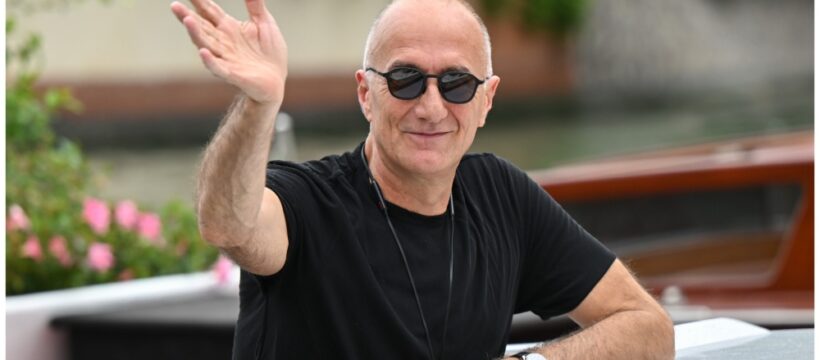Italian genre specialist Stefano Sollima – who is known in Hollywood for “Sicario: Day of the Soldado,” “Without Remorse” and the TV series “Gomorrah” – is in the Venice competition for the first time with Rome-set crime drama “Adagio.”
This beautifully shot picture features an ensemble cast of Italian A-listers comprising Pierfrancesco Favino (“Nostalgia”), Toni Servillo (“The Great Beauty”), Valerio Mastandrea (“Perfect Strangers”) and Adriano Giannini (“The Ties”). It’s the tale of three old – and once mighty – mobsters searching for redemption in a cutthroat contemporary Rome that is literally burning. They find it in the form of a 16 year old named Manuel who is being blackmailed after venturing too deep in a rotting Roman underworld world that he doesn’t understand.
You often work from books such as “Gomorrah” but this is your original idea. How did it germinate?
“Adagio” – this is no secret – is a gift that I made to myself. I liked the idea of going back to depicting Rome, the city where I live and which I love. Obviously with my gaze. The initial idea was to portray three old gangsters, three old legends of criminal Rome. Then I inserted another element which is redemption and therefore the kid, the new generations. This was the initial process. The rest followed.
So where did you go from there?
Well the crime aspect is just on the surface. This is actually a film on human relations, specifically it’s about father-and-son rapports. The use of genre is just a ploy to talk about human beings and society. The father-son relationship is the heart of the narrative. The film’s crime genre is an excuse to talk about something else. We wanted the characters to be sentimentally linked. Since you have three criminals who were sacrificing themselves to save a kid, that aspect veered the writing towards the father and son relationship in every possible form. Basically each main character is a father.
Speaking of genre, “Adagio” brings to mind Italy’s 1970s “polizieschi” crime movies that Tarantino loves so much. Any references?
Not consciously. There are several small references to my previous works such as [TV series] “Romanzo Criminale” and “Suburra.” Tarantino is a great director with a deep knowledge of the movies that we [Italians] made in the 1970s. I share his love for the vision behind that type of cinema because the directors had no fear of using genre, and therefore being very entertaining. But at the same time they were too smart not to take the opportunity to be “political,” albeit not directly so.
I grew up on sets, I’ve seen thousands of movies and I think my consciousness was formed by cinema. So after absorbing all that, it’s inevitable that you refer to other movies. There are references here, but not to specific films. For example, the ending is built exactly the way duels are built in Westerns. Basically, there are things that you do consciously, others that just come to you, and still others that only later you realize where they came from.
Talk to me about the tonal choices you made with your great d.p. Paolo Carnera
Let me start by saying that I’ve shot almost all my movies – aside from the ones I made in the U.S. – with Paolo. Some of the elements that set the tone were part of the writing. Like the idea that there is a fire and Rome is burning. So with Paolo we found the best possible way to represent that. In terms of the tone, the other thing we decided with set designer Paki Meduri is to set the film in Rome, but to depict a Rome that hasn’t been seen much on screen before. Rome is often represented in cinema either by its great historical monuments and piazzas, or by its quasi Pasolini-like periphery. We decide this movie should be set in everyday Rome where people move around a lot. So I thought: ‘Let’s depict Rome, but as though it was L.A.’
Read More About:
Source: Read Full Article
